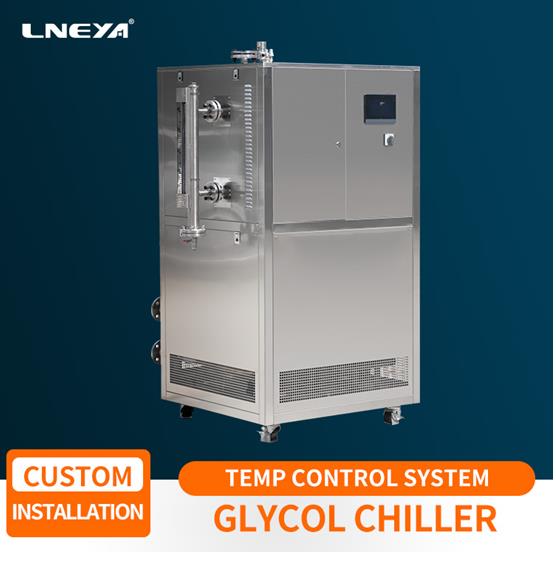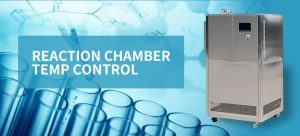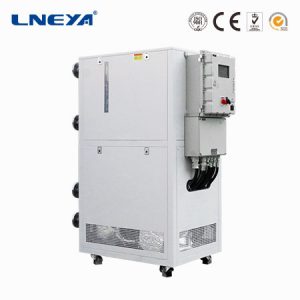What is a laboratory glycol chiller What should I pay attention to
The laboratory glycol chiller is a common
cooling equipment in the laboratory. It is generally used to achieve the
temperature requirement of the cold source. What are the benefits?

1. Why choose a laboratory glycol chiller:
The single-machine self-cascade
refrigeration technology adopted has fast refrigeration speed, low noise and
simple installation. There are many sizes and models of laboratory
low-temperature refrigeration cycle devices. Users can choose models according
to their own needs, and can also choose isolation and explosion-proof options.
2. Commonly used refrigerants in laboratory
glycol chillers:
Commonly used water, brine, chlorinated
solution, and ethylene glycol in laboratory cryogenic refrigeration cycle
devices, the performance, price, and heat capacity of each refrigerant are
different, so the choice can be selected according to the needs.
The freezing point of ethylene glycol is
relatively low, the use temperature is -50 degrees, the performance is
relatively temperature, the price is cheaper, but it is corrosive. The
chlorine-containing solution has a low freezing point, high volatility, and
corrosiveness. The applicable temperature range is -50 to -100°C. Water has
a large specific heat, low density, low price and easy availability. It is
suitable for occasions where the refrigeration temperature is above 0°C. The salt
water can lower the freezing point temperature and expand the cooling range. It
is suitable for medium and low temperature refrigeration systems.
3. Points for attention when using the
laboratory glycol chiller:
A. Before use, you need to check to see if
the location of the device is correct to avoid problems during use.
B. When using the laboratory glycol
chiller, follow the operating instructions for operation, including turning on
and off the machine.
C. Pay attention to good maintenance work,
and perform regular maintenance regularly.
D. When the laboratory glycol chiller fails
during use, it should be solved in time. Some common failures have information
in the instruction manual, which can’t be solved. Contact the manufacturer to
solve it.
Riassumere
Laboratory glycol chillers are used in many
industries such as chemicals, new energy, components, industries, etc., and you
need to pay attention to the quality of choice when choosing. Global consulting
sales@lneya.com.
Raccomandazioni correlate
-
Instructions for using the hydrogenation reactor cooling and heating integrated system
1178There are many accessories in the hydrogenation reactor cooling and heating integrated system, from the compressor to the electrical components. LNEYA reminds you that if you find more evaporator freezing oil, it is recommended to deal with it in ...
Visualizza i dettagli -
Ultra Low Temp Freezer DW of LNEYA
1619Ultra Low Temp Freezer DW Description: Ultra-low temperature freezer mainly used for scientific research, special materials of low-temperature test and preservation; freezing of red blood cells, white blood cells, skin, bacteria, semen, biological...
Visualizza i dettagli -
Precauzioni per il congelatore a bassissima temperatura
9971. Requisiti dell'ambiente dell'apparecchiatura: Per mantenere l'esterno del frigorifero criogenico pulito e ventilato, è necessario mantenere stabile la posizione orizzontale del frigorifero criogenico e assicurarsi che non ci siano oggetti in giro.2. Mana...
Visualizza i dettagli -
What are the decarboxylation reaction conditions and process temperature control?
1177The decarboxylation of aromatic acids is easier than that of fatty acids. For example, benzoic acid can be decarboxylated by adding a little copper powder as a catalyst in quinoline solution and heating. When a strong electron-withdrawing group ...
Visualizza i dettagli
 Refrigeratori industriali LNEYA Produttore Fornitore
Refrigeratori industriali LNEYA Produttore Fornitore













